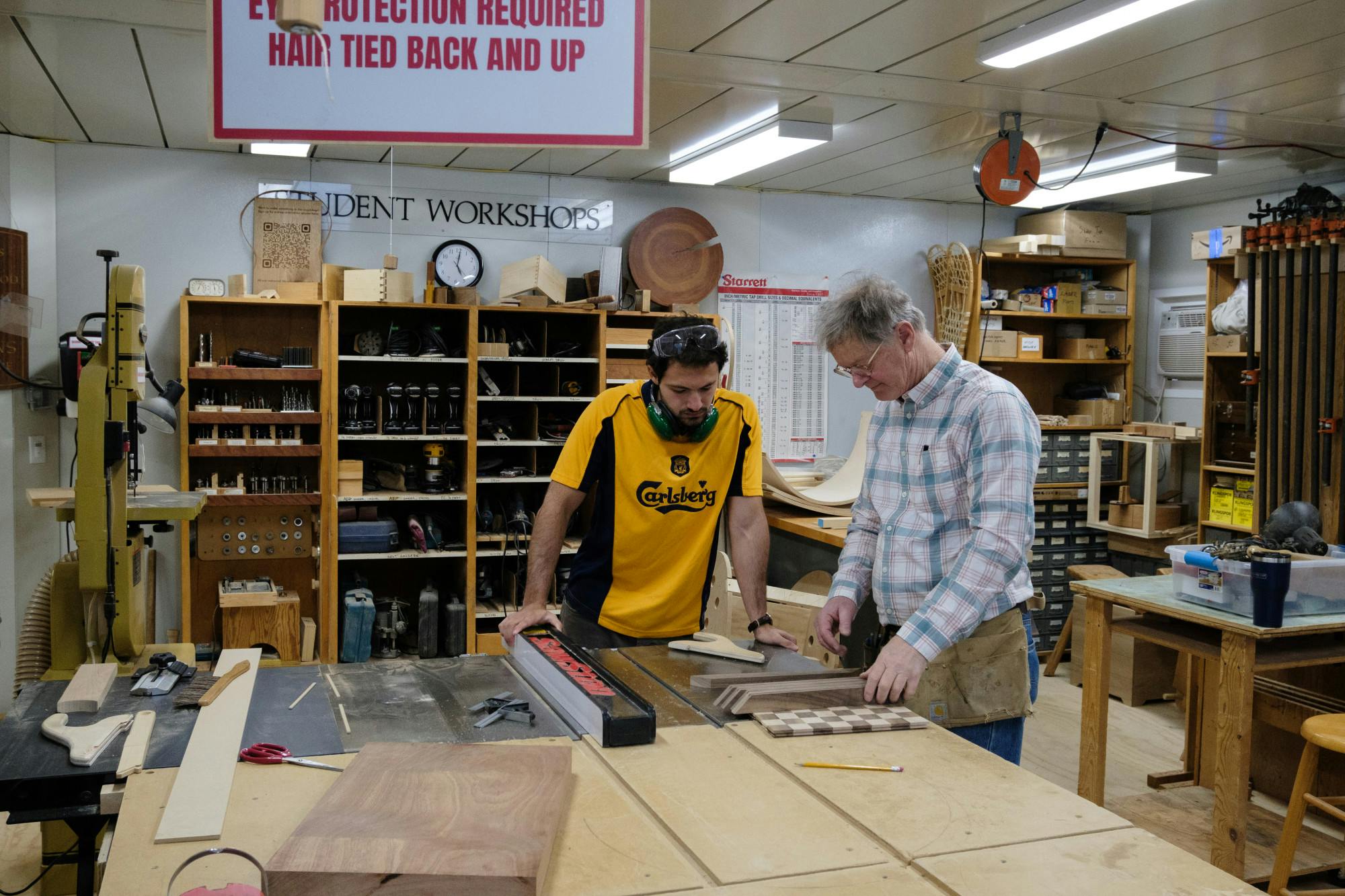As the Hopkins Center remains under construction — a process expected to last until 2025 — studio spaces have been forced to adapt to a changing campus landscape, according to past reporting by The Dartmouth. The Woodworking Workshop continues to function outside the Hop in a modular building next to the Black Family Visual Arts Center. The Dartmouth spoke with director Gregory Elder about his experiences at the current location.
Your workspace in the Hop was 6,000 square feet, compared to the 800 square feet in the modular building. How has the smaller space impacted the workshop?
GE: There are certain tools we don’t have here. We had an entire room full of hardware and oxygen supplies, leather, rubber, plastics, metal and all kinds of different stuff in the old space. We also had a huge area of lumber and plywood in different raw materials. That’s been the most difficult thing — we’re working with a limited palette of materials and tools, so we have to refigure, “Can we make that? And if we can’t, how can we do it?”
How has the new space impacted students?
GE: In a way, it’s kind of interesting being here because the new space is more what a student might have for their own shop. The other shop was so grandiose that a lot of students would say, “Well, I guess I’ll never do woodworking because I’ll never have a shop like this.” Now they can be in a more approachable space.
Have you seen an increase or decrease in the number of students coming into the woodshop?
GE: A decrease for sure. Previously, we had a bigger space and we had more people, so the word got out better. Our numbers have always been driven by word of mouth.
What will happen when the studio moves back to the Hop?
GE: I don’t know what the College is going to provide us with. I think the space is going to be an empty shell. When we moved to the temporary location, we had to buy these tools because the tools we had in the Hop wouldn’t work here. We didn’t have the right power available, so all of our old tools went into storage. I think we’re just going to have to start over and set up.
Does the Woodworking Workshop collaborate with other groups on campus?
GE: We do a lot of work with studio art, specifically with architecture classes and sculpture classes. We’ll help students that want to make something that they don’t have either the expertise or the materials to do in the studio arts shop. We do a lot with engineering students who are taking classes and making prototypes. The studio works with lots of different people on campus.
What does a typical day look like for you?
GE: We’re open mostly in the afternoons, from 1 p.m. to 5 p.m. during the week. On Saturdays, we’re open from 9 a.m. to 5 p.m, but days are atypical. People will come in with projects of their own initiative. They may come to us and want to create something seemingly impossible, and then they do it. We don’t expect people to know anything. Everybody comes in knowing nothing, and then people learn. People come in and either they have an idea, or they want us to help them create an idea.
What do you find special about the Woodworking Workshop?
GE: The Woodworking Workshop is a really great gateway to the arts. You don’t have to think of yourself as an artist. Most people don’t think of themselves as artists if they’re doing woodworking, but they are, in fact, making these aesthetic decisions about form and shape and color. They’re really involved in this creative process. As it turns out, whatever people make, they’re really happy with.




